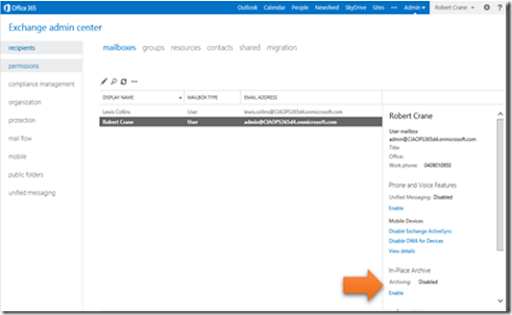I am pleased to announce that Microsoft Australia is planning a new training and certification campaign, Ready, Cert, Go which I will be involved with.
To start off with there will be complimentary 60 minute instructor lead tutorial webcasts in November which will cover the topic to be offered in full day exam prep courses in December 2013 at Microsoft in Sydney.
Here are the links to the upcoming webinars:
Server and Tools
Monday – 4 November 2pm, System Center 2012 (Exam 70-247)
Tuesday – 5 November 12pm, SQL Server 2012 (Exam 70-462)
Wednesday – 6 November 12pm, Windows Server 2012 (Exam 70-410)
Thursday – 7 November 12pm, Windows 8 (Exam 70-688)
Friday – 8 November 12pm, Windows Azure (Exam 70-487)
You can register for these webinars at:
Business Productivity
Monday – 4 November 12pm, SharePoint 2013 (Exam 70-331)
Tuesday – 5 November 2pm, Lync (Exam 70-337)
Wednesday – 6 November 2pm, Exchange (Exam 70-341)
Thursday – 7 November 2pm, Office 365 (Exam 74-325) (with me!)
Thursday – 7 November 3pm, Office 365 (Exam 70-321) (with me!)
You can register for these webinars at:
Here are the dates for the Exam Preparation Sessions, designed to get you across the line, first time. It’s $150 per day and includes an Exam Voucher, which is usually $206:
Server and Tools
Monday – 9 December, System Center 2012 (Exam 70-247)
Tuesday – 10 December, SQL Server 2012 (Exam 70-462)
Wednesday – 11 December, Windows Server 2012 (Exam 70-410)
Thursday – 12 December, Windows 8 (Exam 70-688)
Friday – 13 December, Windows Azure (Exam 70-487)
You can register for these certification days at:
Business Productivity
Monday – 9 December, SharePoint 2013 (Exam 70-331)
Tuesday – 10 December, Lync (Exam 70-337)
Wednesday – 11 December, Exchange (Exam 70-341)
Thursday – 12 December, Office 365 (Exam 74-325) (with me!)
Friday – 13 December, Office 365 (Exam 70-321) (with me!)
You can register for these certification days at:
Even though I am giving the Office 365 content I have signed up myself for the SharePoint and Lync sessions as I see this as a great opportunity to not only learn about the product but also hopefully pass the certification. I’d love to do the Windows 8 and Azure sessions as well, alas, not to be this time.
I hope to see you there at the webinar or on the day.
















